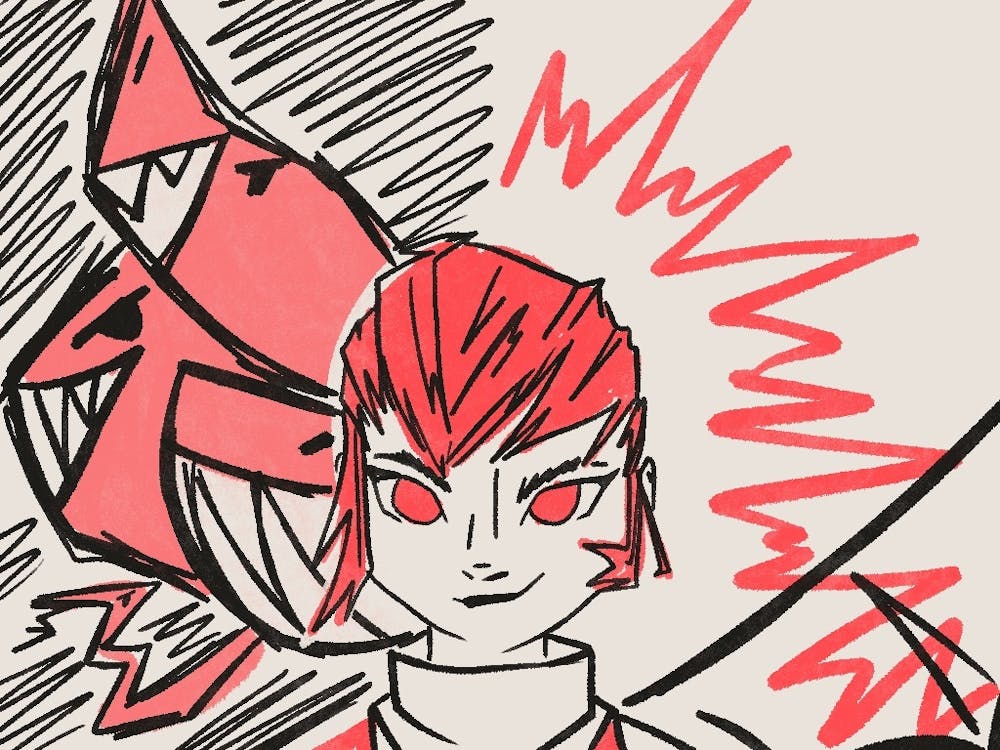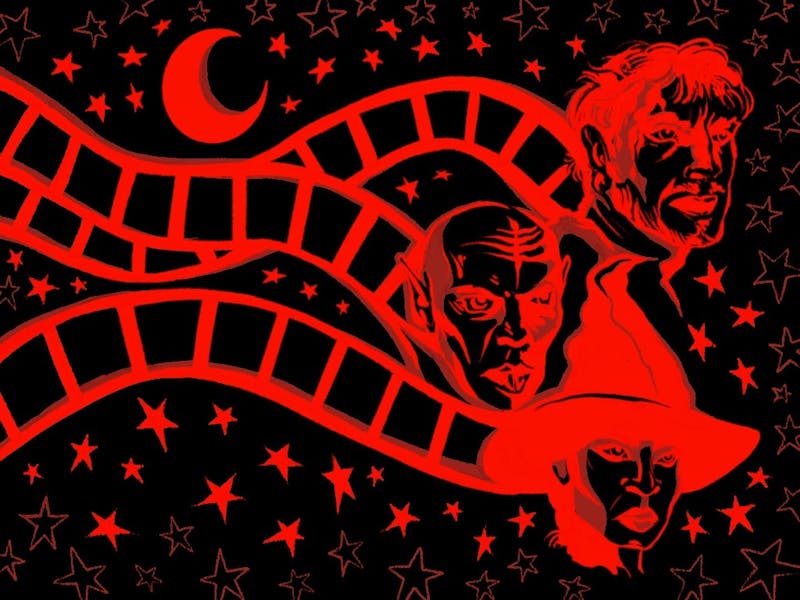Think “Monster” — what images pop into your head? Perhaps there‘s a disturbing creature slinking through the edges of your vision, it’s terrifying form hidden just out of sight. You may imagine the beast’s jaws, its growl or its piercing, bottomless eyes.
A small, pink humanoid with a ringing laugh probably doesn't come to mind. Netflix’s "Nimona," adapted from N.D. Stevenson’s New York Times best-selling graphic novel features the humanoid monster in question as one of the two main protagonists: Nimona and Ballister. Nimona, our favorite pink monster, is an angsty teenager, a shapeshifter and — evidently — a powerful being. Ballister is a commoner and a gay man of color. He is shunned by society even as he tries to prove his worth; he is a villain.
“People see parts of us and might assume that’s the whole story,“ said Stevenson in an interview with Tim Manley, a writer and illustrator, in a National Book Foundation piece. “This becomes much more literal for Nimona. If she feels like being a monster, she’s a monster.”
Throughout the movie, Ballister and Nimona journey explores self-identity and finding acceptance in the face of society’s oppressive systems. Throughout the film, the plot challenges the viewer’s perspective of a ”monster” by portraying Nimona as a victim and, most importantly, a hero.
This dichotomy is where the show "Nimona" lands its most significant impact, calling into question what it really means to be a “hero” as defined by society. By any measure, Nimona is not your conventional heroine. She is an outsider, a threat to the flow of society. She is angry with the system that oppressed her for so long, and yet she chooses to risk her life in order to preserve the very people who sought to eradicate her.
The show is a nod to the power of the ostracized and downtrodden in society, exploring social norms regarding what is normal vs. abnormal. Netflix’s "Arcane" and Leigh Bardugo’s "Six of Crows" are also geared towards teenagers and young adults, especially minority groups such as the LGBTQ+ community who often feel rejected by society.
“It feels so vulnerable to see that part of myself up on screen, and then to see that reaction to that character and the way people are finding their own stories within it,” said Stevenson in an interview with TheGamer. “It’s really healing, like I’m sending back this little beacon of hope to who I was first coming up with 'Nimona.'”
Nimona’s shapeshifting abilities are an allegory for transgender identity. She describes her desire to shapeshift as an “itch” that never goes away until she transforms, mirroring the feeling of dysphoria, where individuals feel uncomfortable in the gendered body they were born in. Stevensonhimself came out as non-binary after releasing "Nimona" in 2005. The movie calls out to similar minorities, telling them that they are not alone; they too can find representation in an epic production.
“These stories have been my own way of exploring myself,” said Stevenson in an interview with Gizmodo. “I was feeling out these identities in fiction.”
Nimona is not one thing. She is a shark, an otter, a whale and, finally, a hero who will make you laugh, cry and ultimately fall in love with both her antics and timeless strength.



